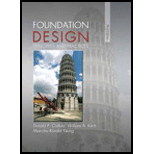
Concept explainers
The second paragraph of this chapter argues that a retail building that is damaged during an earthquake and must be demolished may not constitute a failure. Do you agree with this assessment? Defend your position.
Whether the given assessment is agreeable that a retail building that was damaged during an earthquake and must be demolished may not constitute a failure.
Explanation of Solution
An argument which is as follows:
A retail building and a hospital, both of which are constructed in a seismically active area and are designed considering the maximum likely earthquake for the area. Several years after the structures are built, the design earthquake occurs.The building did not collapse during the earthquake and no lives were lost. However, both buildings suffer some significant structural damage and must be demolished. Did both buildings fail during the earthquake?
The argumentthat the hospital building failed and the retail store didn’t is credible. The claim is valid as the design objectives built into the international building codes and modern building codes, that categorize structures based on their risk to human life and put these two structures in different categories with different performance requirements. The retail structure comes in the category II structure with substantial hazard to human life in the event of failure.
The design requirements for the retail structure are not to collapse during the design earthquake and allow occupants to safely exit the building, but it is not expected to survive the design earthquake.
Therefore, the retail structure is not a failure and is built according to the specifications.
Want to see more full solutions like this?
Chapter 5 Solutions
EBK FOUNDATION DESIGN
Additional Engineering Textbook Solutions
Degarmo's Materials And Processes In Manufacturing
Java How to Program, Early Objects (11th Edition) (Deitel: How to Program)
Starting Out with Programming Logic and Design (5th Edition) (What's New in Computer Science)
Web Development and Design Foundations with HTML5 (8th Edition)
Starting Out With Visual Basic (8th Edition)
Computer Science: An Overview (13th Edition) (What's New in Computer Science)
- Derive by deconvolution the six-hour unit hydrograph from the following data for a watershed having a drainage area of 216 km2 , assuming a constant rainfall abstraction rate and a constant baseflow of 20 m3 /s. Six-hour period 1 2 3 4 5 6 7 8 9 10 11 Rainfall (cm) 1.5 3.5 2.5 1.5 Streamflow (m3 /s) 26 71 174 226 173 99 49 33 26 22 21 Use the unit hydrograph developed to calculate the streamflow hydrographfrom a 12 hour-duration storm having 2 cm of rainfall excess in the first six hours and 3 cm inthe second six hours. Assume a constant baseflow rate of 30 m3/s.arrow_forwardPlease answer the following question in the picture. Thank you for your help.arrow_forwardGiven the unit hydrographic in the table, calculate the streamdlow hydrographic from a 12 hour duration story having 2cm of rainfall excess in the first six hours and 3cm in the second six hours. Assume a constant base flow rate of 30 m3/sarrow_forward
- Based on the following information, what is the owner’s equity? Current Assets: $162,000Current Liabilities: $91,000 Fixed Assets: $290,000 long-Term Debt: $140,000arrow_forwardPlease refer to the below figure. Use f y = 60,000 psi and f c′ = 3000 psi. Each web is reinforced with 2-#4 rebars in one layer. (a) Use the entire flange width as effective. Determine if the interior Double-Tee beam behaves as a T-beam or rectangular beam. (b) Determine the design moment strength of the section. Hint: You can collapse the two webs in a single web as discussed in class.arrow_forwardGrade is being established to the bottom of a footing that is 24” thick. The elevation of thetop of the footing is 102.33’. the elevation of the existing grade is 106.14’. the backsight of thesurveying instrument on a benchmark of 100.00’ is 6.78’. what is the correct reading for the rodat the bottom of the footing?arrow_forward
- 6.48 This "double" nozzle discharges water (p = 62.4 lbm/ft³) into the atmosphere at a rate of 16 cfs. If the nozzle is lying in a horizontal plane, what X-component of force acting through the flange bolts is required to hold the nozzle in place? Note: Assume irrotational flow, and assume the water speed in each jet to be the same. Jet A is 4 in. in diameter, jet B is 4.5 in. in diameter, and the pipe is 1.4 ft in diameter. A 30°F B Problem 6.48 Xxarrow_forward6-1 For the rectangular beam shown in Fig. P6-1, (a) Draw a shear-force diagram. (b) Assuming the beam is uncracked, show the direction of the principal tensile stresses at middepth at points A, B, and C. (c) Sketch, on a drawing of the beam, the inclined cracks that would develop at A, B, and C. 10 kips A B 1 kip/ft 7.5 ft Fig. P6-1 + 7.5 ft 6 ft 10 kipsarrow_forward6.85 A reducing pipe bend is held in place by a pedestal as shown. There are expansion joints at sections 1 and 2, so no force is transmitted through the pipe past these sections. The pressure at section 1 is 20 psig, and the rate of flow of water (p = 62.4 Ibm/ft³) is 2 cfs. Find the force and moment that must be applied at section 3 to hold the bend stationary. Assume the flow is irrotational, and neglect the influence of gravity. 6 in. diameter + 24 in. 24 in. (3 4 in. diameter Problem 6.85arrow_forward
- 6.79 A cart is moving along a railroad track at a constant velocity of 5 m/s as shown. Water (p = 1000 kg/m³) issues from a nozzle at 10 m/s and is deflected through 180° by a vane on the cart. The cross-sectional area of the nozzle is 0.002 m². Calculate the resistive force on the cart. 5 m/s D 10 m/s Nozzle Problem 6.79arrow_forwardOil of specific gravity 0.800 acts on a vertical triangular area whose apex is in the oil surface. The triangle is 9 ft high and 12 ft wide. A vertical rectangular area 8 ft high is attached to the 12-ft base of the triangle and is acted upon by water. Find the magnitude and position of the resultant force on the entire area.arrow_forwardWhat types of constraints did Covid-19 cause in duration of activities on different construction projects?arrow_forward
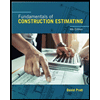 Fundamentals Of Construction EstimatingCivil EngineeringISBN:9781337399395Author:Pratt, David J.Publisher:Cengage,
Fundamentals Of Construction EstimatingCivil EngineeringISBN:9781337399395Author:Pratt, David J.Publisher:Cengage,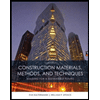 Construction Materials, Methods and Techniques (M...Civil EngineeringISBN:9781305086272Author:William P. Spence, Eva KultermannPublisher:Cengage Learning
Construction Materials, Methods and Techniques (M...Civil EngineeringISBN:9781305086272Author:William P. Spence, Eva KultermannPublisher:Cengage Learning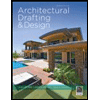 Architectural Drafting and Design (MindTap Course...Civil EngineeringISBN:9781285165738Author:Alan Jefferis, David A. Madsen, David P. MadsenPublisher:Cengage Learning
Architectural Drafting and Design (MindTap Course...Civil EngineeringISBN:9781285165738Author:Alan Jefferis, David A. Madsen, David P. MadsenPublisher:Cengage Learning Traffic and Highway EngineeringCivil EngineeringISBN:9781305156241Author:Garber, Nicholas J.Publisher:Cengage Learning
Traffic and Highway EngineeringCivil EngineeringISBN:9781305156241Author:Garber, Nicholas J.Publisher:Cengage Learning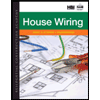 Residential Construction Academy: House Wiring (M...Civil EngineeringISBN:9781285852225Author:Gregory W FletcherPublisher:Cengage Learning
Residential Construction Academy: House Wiring (M...Civil EngineeringISBN:9781285852225Author:Gregory W FletcherPublisher:Cengage Learning Materials Science And Engineering PropertiesCivil EngineeringISBN:9781111988609Author:Charles GilmorePublisher:Cengage Learning
Materials Science And Engineering PropertiesCivil EngineeringISBN:9781111988609Author:Charles GilmorePublisher:Cengage Learning





